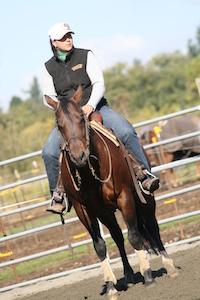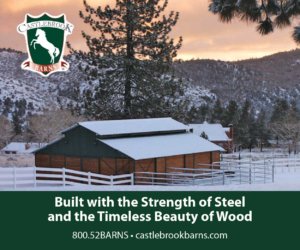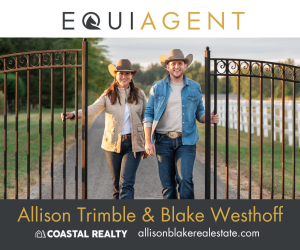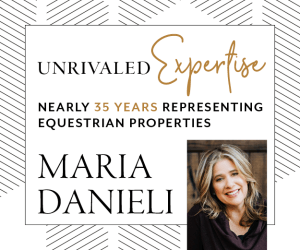Part 2: Common Causes and Solutions for Fear
by Allison Trimble, Willfully Guided Horsemanship
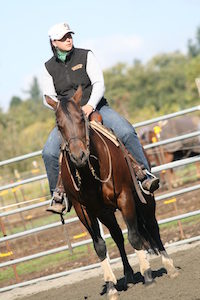
It is important to understand that horseback riding is considered an extreme sport. If you don’t ever want to take a risk, break a sweat, or get dirty, find another hobby. We concluded last month that most fear comes from a lack of ability and a fear of the unknown. This month we discuss solutions to those things.
I have heard people say a rider should “just get over” fear and/or “trust the horse.” I don’t agree. Fear can be healthy and trust is something that is earned, not simply given away. I encourage you to think less about “fear” and more about an alarm system inside that lets you know when there is danger. It is your job to minimize that danger and increase your skills to learn to deal with the unexpected.
Recently I was working the Hydrabull at Curt Storbakken’s and my client was facing anxiety caused by her mare rearing in the past. Her fear was obvious, both on her face and in her body. This added to the problem and the mare took full advantage of it. I hopped on her and quickly became 100% certain about the horse’s next move—straight up in the air. The rider had a reason to be scared. She felt the horse’s behavior coming but simply didn’t know what to do about it. Her fear was an alarm bell. The horse needed to be driven forward in that moment and put to work, but because of the progressed issue, it was not as simple as just kicking her. She needed a reminder of her place in the horse/human relationship by reinforcing her training. I took her away from the bull and went about reconnecting her brain. I took her back to the bull and the first time we were in that scary position I put my legs in her and put her to work. The idea of rearing never surfaced. Through schooling, I had a solution and knew the horse’s mind was with me. My client is a very good rider. Now, she knows how to deal with that particular issue, and she will start to shed the fear. Capability breeds confidence.
There are three types of non professional riders. The first type I call the “Brave and Bold” rider. This person is not scared easily. If they hit the dirt they just climb back on. This type is readily associated with youth. As we get older, it becomes less appealing. The second type of rider is the “In Training” rider. This person keeps their horse in training with a professional. Someone else is paid to provide the horse with the work necessary to make him a reliable partner. The trainer makes sure that the horse is always prepared for the rider at his/her ability level. With the right professional (one with credentials), this is probably the surest choice to avoid injury. The drawback is it is cost prohibitive for most horse people.
The majority of my readers do not fit into the first two classifications. In order to rise above the fear, the rider must be “Determined and Diligent.” Hard work and education reap major benefits. If this describes you, build your understanding of the way ALL horses behave. Don’t let common sense evacuate when working outside of your comfort zone. Create a knowledge bank and apply it. Shed preconceived notions and become a student of the horse. Having said that, the average horseperson does not accurately grasp the amount of time and effort it takes to get a horse broke. The majority of those who wrote me about fear issues, when asked about their riding habits, rode 3 or less times a week. Some much less. Nothing brings horse and rider together like lots of sweaty saddle pads. I work my horses, in their formative stages, at least 5 days a week. Developing a solid work ethic in a horse and your role as leader is paramount to success.
The most common cause of fear is the wrong horse for a person’s ability or lifestyle. Of the people I talked to, nearly all had a horse that was not suited for them. People have many specifications or limitations when they are horse shopping. Even worse, they often have none. “I fell in love with him” is not justification for an equine purchase. If fear is an issue, “Tried & True” needs to be at the top of the list. That quality is not found in a young horse. Ever.
Being properly mounted, increasing education and experience, and dogged devotion, will result in a remarkable increase in capability. It will build trust and the frightening, crippling fear will subside, leaving in its place the proper amount of healthy awareness that is present in all great horsemen.
Published April 2013 Issue
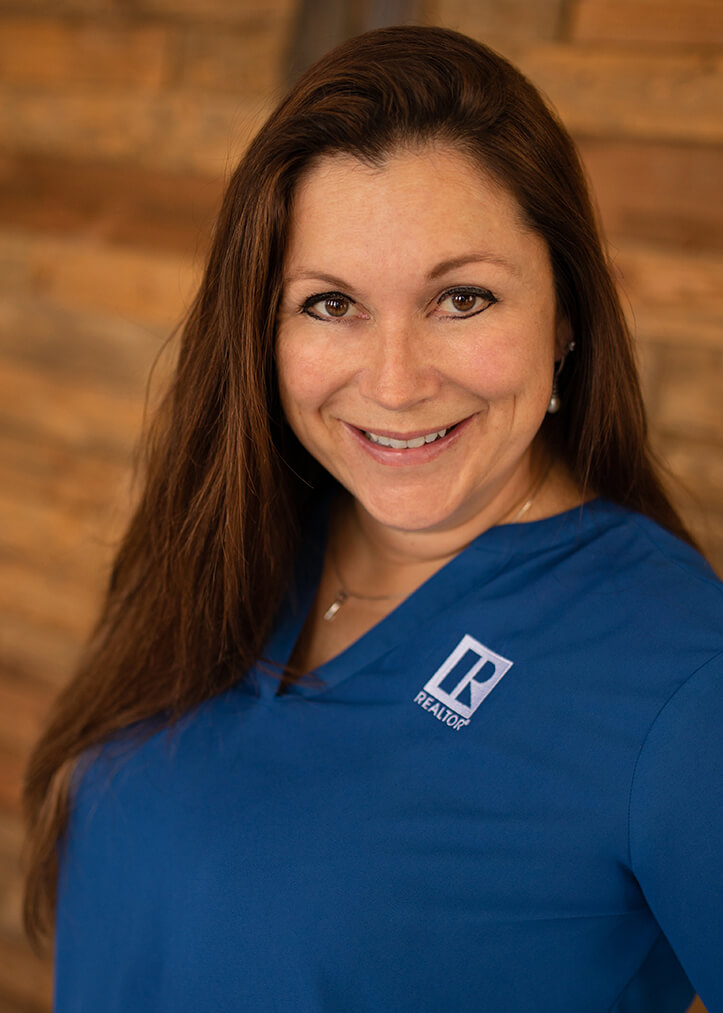
Allison Trimble is a Realtor® specializing in equestrian properties, farm and ranch properties, and residential real estate. As a former horse trainer, and a current owner, breeder and non-pro competitor in cow horse and reining events, she combines her experience in the horse industry with her lifelong real estate expertise to guide her clients through the real estate process.
Learn more at www.coastalrealtywa.com


